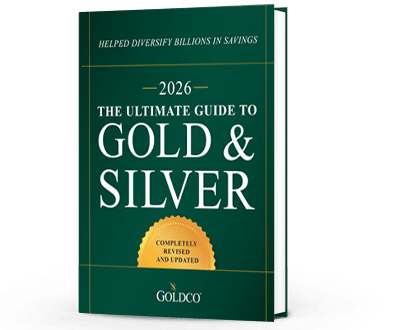
Next to stocks, bonds, and cash, gold is probably the top investment asset when it comes both to investor interest and common curiosity. Cultures across the world and throughout history have valued gold for its scarcity, durability, and use in jewelry and money.
Now that gold is no longer used as money, its primary use in society today is as an investment asset. But while millions of investors would like to invest in gold, far fewer know how to invest in gold.
For those investors who don’t track precious metals markets on a regular basis, jumping into the world of gold can seem intimidating. They may have a gut feeling that tells them gold is a good investment and that they should make it a part of their investment portfolio, but they don’t know how to take the first steps to invest in gold.
Thankfully, investing in gold doesn’t have to be difficult. Just keep reading to find out how to invest in gold and to make that investment process as easy as possible.
1. Consider the Gold Price
For centuries, gold’s value was legally defined by governments, generally in relation to silver. Eventually, it began to be denominated in terms of national currencies such as the dollar and the pound, with each of those currencies being officially defined as a certain weight of gold.
While gold may no longer officially be tied to world currencies, it’s still an important commodity within the world economy. And its price determines whether or not investors decide to buy or sell.
Determining the Price of Gold
Too many investors get caught up in looking at gold’s intraday price movement, or even its day-to-day price movement, and wonder whether they’re making the right investment. That’s exactly the wrong approach.
When looking at the gold price, it’s important to look at past performance, as that can help indicate how gold performed versus other assets, how it performed during recessions, etc. But it’s also important to anticipate the future gold price. Gold’s price is affected by both supply and demand. With supply remaining relatively constant due to the difficulty of mining new gold, demand then becomes the major variable in affecting the gold price.
2. Anticipate the Demand for Gold
Investment demand is the primary driver in gold demand, and it has its ebbs and flows. But there are general principles that any investor learning how to invest in gold can adhere to in order to anticipate future demand.
Gold and the Economy
Any weakening or expected weakening of economic conditions will lead to greater gold demand and higher prices. It’s primarily the threat of a stock market crash that has investors rushing to sell their stocks and invest in gold.
When stock markets, houses, and other assets start to reach levels that many consider overvalued or bubble territory, that’s often a warning sign that a crash is just around the corner. And that’s when it makes the most sense for investors to start making the move to invest in gold.
Gold also rises in price during rough patches in foreign affairs. Any time the prospect of armed conflict rears its head, investors begin to snap up gold to protect the value of their assets, and gold’s price rises.
3. Choose an Investment Type
Gold is available for investment in many different forms and through many different investment vehicles. This is the area that gives investors learning how to invest in gold the most difficulty, as each different form or method of investment has its advantages and disadvantages. You’ll want to learn about each of the ways to invest in gold before you make your investment decision.
Gold Coins and Bullion
Gold coins and bullion are the primary form of gold with which most investors are familiar. Coins can be collectible coins or bullion coins (those bought just for the value of their metal). Gold bullion generally takes the form of gold bars of varying sizes, but it can also include gold rounds, gold foil imprinted into paper notes or plastic cards, or other unique gold products.
Investors will always pay a premium to the spot price of gold when purchasing coins and bars, with the largest premiums generally coming on the smallest coins and bars. Bars and coins purchased with post-tax dollars can be stored at home, in a safe deposit box, or as part of a gold Roth IRA. Bars and coins can also be purchased with pre-tax dollars through a traditional gold IRA.
Gold Mining Stocks
Some investors like to invest in the stocks of gold mining companies, thinking that when the gold price rises, the price of those miners’ stocks may also rise. But that isn’t always the case.
Gold mining is very resource intensive, and in some areas of the world can also be very labor intensive. It is sensitive to political upheaval, labor unrest, and prices of inputs such as electricity and gasoline. Even when gold prices rise, the cost to mine each ounce of gold could still mean that gold mining companies are just barely eking out a profit.
Gold ETFs
Gold exchange-traded funds (ETFs) have become a more popular way to invest in gold in recent years. These funds purchase gold, then sell shares in the fund to investors. Because they’re sold on exchanges, they’re available to millions of investors who are looking to capitalize on the performance of gold.
But gold ETFs have their drawbacks, too. Investors in gold ETFs aren’t investing in physical gold, just shares in a fund. They can’t take physical delivery of their gold. And because of the complicated system of depositories and sub-depositories, in many cases they may not even know who actually holds the gold owned by the fund.
Add in taxes and fees that detract from investment returns and you’re left with a method to invest in gold that is inferior to gold itself. Investing in a gold ETF may make sense for someone just looking to dip a toe into the world of gold investing, but for those looking for the best method of how to invest in gold, there are better options available.
Gold IRAs
Gold IRAs operate just like every other IRA, only they invest in gold rather than stocks, bonds, and other financial assets. A gold IRA can be a traditional IRA that invests in gold with pre-tax dollars, in which case taxes are only due when you take a distribution. Or a gold IRA can be a Roth IRA that invests in gold with post-tax dollars, and in which no taxes are due at distribution.
Gold IRAs are a popular way to invest in gold, and knowledge of them is becoming more widespread all the time. For those who already have significant amounts of retirement assets and who want to protect their assets by investing in gold, gold IRAs can be a good choice.
Gold 401(k) Rollover
Investors who want to move existing retirement assets into gold can do so through a gold 401(k) rollover. A rollover allows investors to roll over funds from existing 401(k), 403(b), TSP, or IRA accounts into a gold IRA, allowing them to maintain the same tax advantages of their current retirement savings accounts while benefiting from all the advantages that gold can offer.
Get Started with Your Gold Investments
When learning how to invest in gold, it can seem like there’s a steep learning curve. But the more effort you put into learning how to invest in gold, the easier your decisions get once you decide to invest in gold.
With years of experience helping investors benefit from investing in gold, Goldco’s team of experts can help you in your investment journey. Contact Goldco today to learn more about how your investment portfolio can benefit from gold.





